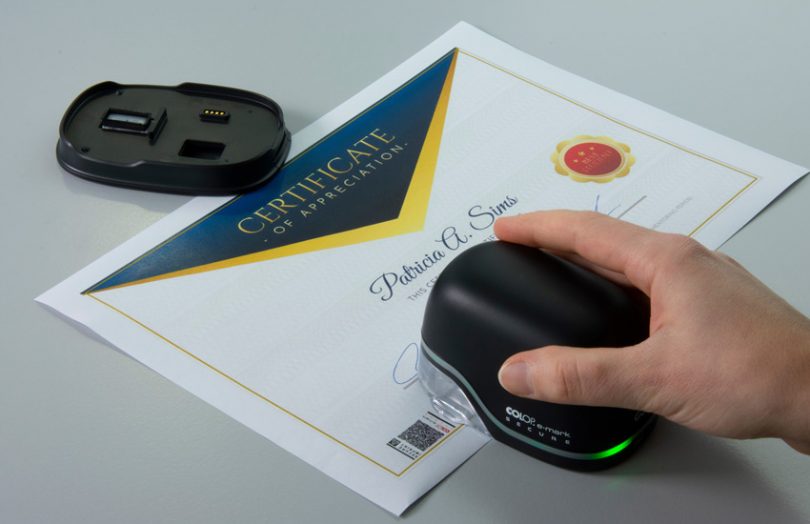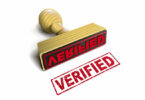Austrian-based stamp and marking devices manufacturer COLOP developed a solution to verify and authenticate digital and physical documents on blockchain. The product is called e-mark Secure.
When you visit your doctor’s clinic, there are invariably certificates of their qualifications on the wall. But how do you know they’re real? This isn’t just paranoia. I’ve had family members duped by fake medical qualifications.
With COLOP, that doctor’s certificate can incorporate a QR code so you can check it was issued by the professional body as claimed. Much like old-fashioned stamps used by notaries, the e-mark stamps documents, but with a hand-size QR code printer with a unique device identity.
COLOP’s solution is different from other document security measures because it is relevant for both printed and digital documents. Existing solutions to authenticate and verify documents are often only applicable to either physical or digital copies. For example, watermarks and signatures are useful in paper copies and e-signatures or holograms authenticate automated documents, but neither solution is suitable to both contexts.
The COLOP e-mark process has two aspects. The first is to authenticate the document with the digital stamp. And the other is for the user to verify the document is authentic.
To verify the document, one scans the QR code with a mobile device and a standard QR code reader app, which will redirect them to installing the COLOP verification app. In the app, users can find information such as where and when the e-mark was created, the authenticator’s contact information, a scanned copy of the original document, and other details. We tried it for the press release and it was slightly clunky but worked.
Information regarding a document and its authentication is encrypted data within the QR-code and only recipients of the record have access to it. Encrypted data of every document authenticated becomes a transaction on the blockchain. Therefore it can never be deleted or edited and limits opportunities for fraud and forgery.
The verification app has already been launched and the authentication service is in the testing phase. COLOP is currently looking for customers to participate in a pilot.
There are numerous potential applications, including certificates, contracts, letters, identity documents and frankly, anything where you need to be confident the document hasn’t been tampered with. The process is somewhat similar to notarizing a document.
Most other blockchain document verification solutions take a simpler approach. They use a hash or fingerprint of the document contents and store that on a blockchain. If a user wants to check the document, they ensure that the hash matches. Examples include Wiztrust, Everipedia, safe.press, ANSA and the NY Times. But that approach works best for digital documents, less so for physical ones.
Most of the blockchain solutions looking to link real and digital solutions focus on linking a physical item to its digital twin rather than documents.
Copy-proof QR code provider ScanTrust developed an anti-counterfeit solution that can be scanned by consumers to track and trace a product and engage with the manufacturer. Furthermore, late last year Infineon Technologies launched a blockchain security solution that attaches NFC crypto chips behind a product’s label that can be scanned for authentication.






